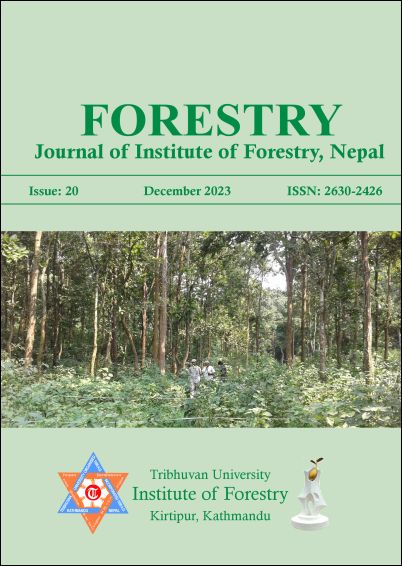Public Perception and Institutional Involvement in Urban Forestry Development in Dhangadhi Sub-Metropolitan City, Sudurpaschim Province, Nepal
DOI:
https://doi.org/10.3126/forestry.v20i1.64340Keywords:
Avenues, Institutions, PerceptionAbstract
Urban Forestry is an integral component of sustainable urban development, involving strategic administration of trees and green areas within urban environments. In this dynamic domain, institutional engagement is closely connected with local governments, sub-metropolitan offices, and division forest offices playing crucial roles in shaping policies and regulations. The significance of public perception in urban forestry practices cannot be overstated, as it shapes community involvement and endorsement for initiatives focused on improving environmental quality and urban well-being. The research aims to look into the public perception and institutional involvement in the development of urban forestry in Dhangadhi Sub-Metropolitan City, Sudurpaschim Province, Nepal. It seeks to assess the awareness levels of the residents regarding urban forestry initiatives and understand their perceived benefits and concerns. Simultaneously, the study will analyze the specific roles played by key institutions, including sub-metropolitan offices and division forest offices, in shaping urban forestry within the region. This paper is based on a household survey (n=210) and key informant interviews (n=7) representing the different institutions related to urban forestry. Roadside plantations, park and avenue plantations, as well as community forest management, were the major activities under urban forestry. Regarding the people’s perception, the majority of the respondents (80%) were found to be aware of the advantages associated with urban forestry however only 35% of people were found engaged in urban forestry activities. Over the past few years, the local government has advocated for urban greenery. Despite these efforts, there is a lack of corresponding legislation or regulations specifically addressing urban forestry. Consequently, the effective management of city forestry demands concrete scientific and professional expertise.
Downloads
Downloads
Published
How to Cite
Issue
Section
License
© Tribhuvan University, Institute of Forestry




